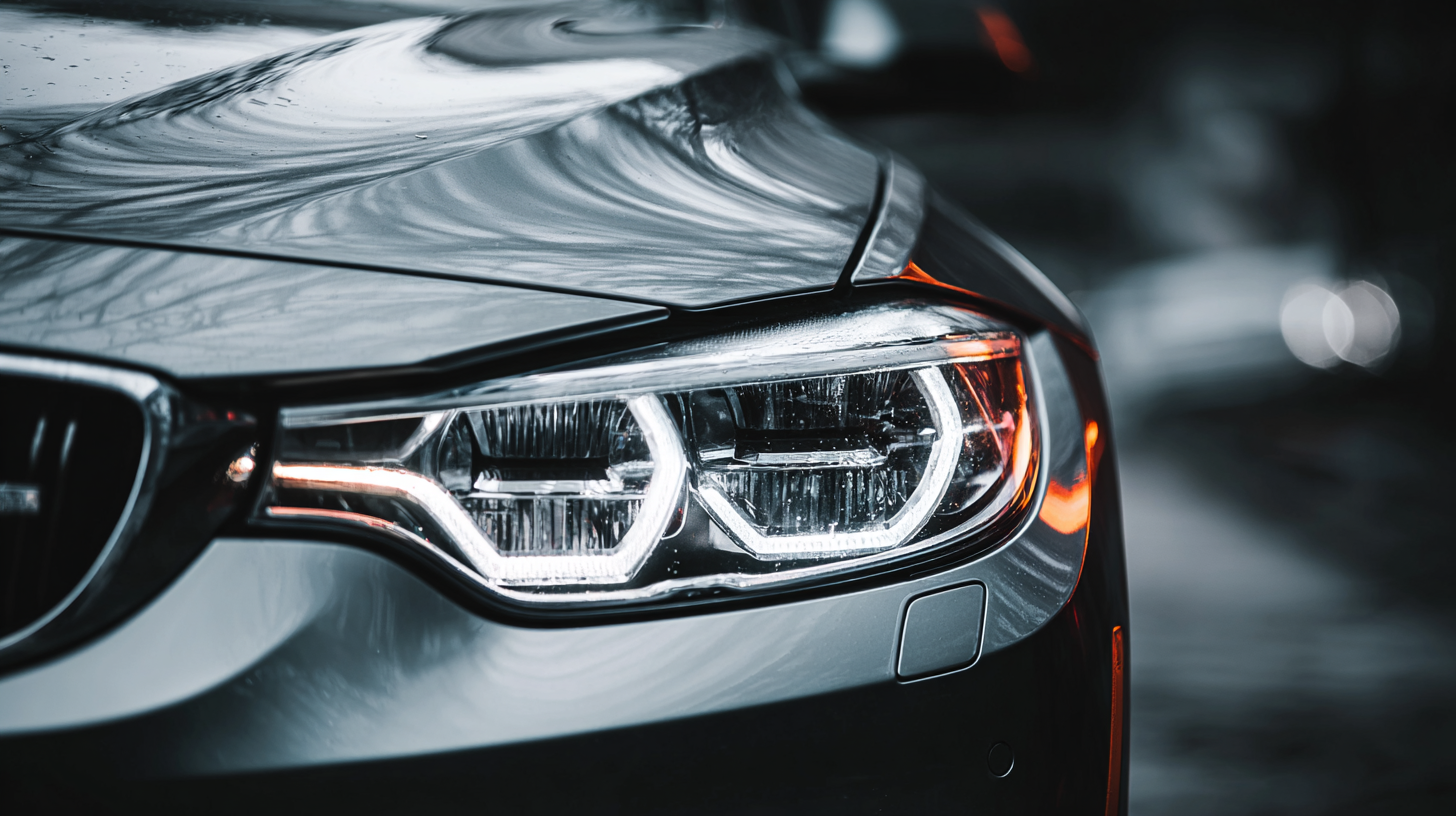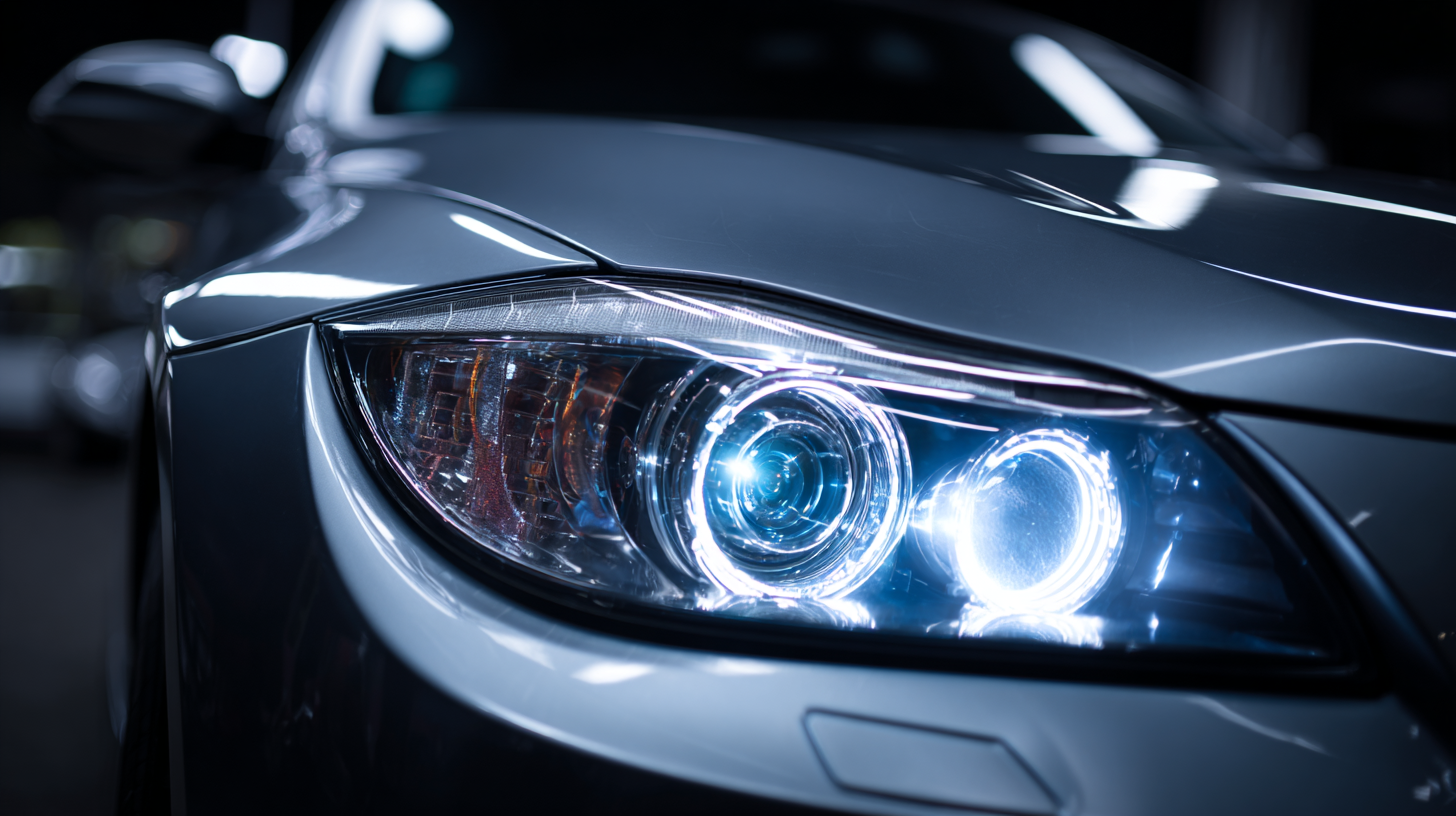As the automotive industry continues to evolve, the demand for enhanced visibility and safety has brought LED headlights to the forefront. According to a recent report by the Automotive Lighting Market Research, LED headlights are projected to dominate the automotive lighting market, accounting for over 50% of the total market share by 2026. This surge is not only due to their energy efficiency but also their longer lifespan, with some LED systems lasting up to 25,000 hours compared to traditional halogen bulbs that average around 1,000 hours. With advancements in technology and the growing trend of retrofitting vehicles with LED headlights, selecting the best option for your vehicle can be daunting. This blog will provide 12 essential tips for choosing the right LED headlights, ensuring you make an informed decision that enhances both your visibility on the road and your vehicle's aesthetic appeal.

When selecting LED headlights for your vehicle, it’s crucial to understand the industry standards and regulations that govern their safety and performance. The Society of Automotive Engineers (SAE) sets guidelines that most manufacturers adhere to, ensuring that headlights provide adequate illumination without blinding other drivers. Look for products that are SAE-compliant, as this certification indicates that the headlights have been rigorously tested for quality and safety.

Additionally, consider the lumen output of the LED headlights you’re interested in. A higher lumen count means brighter lights, which can significantly enhance visibility during nighttime driving. Aim for headlights that offer a balance between brightness and beam pattern to ensure you’re not only lighting up the road ahead but also maintaining road safety for fellow drivers.
Lastly, check for IP ratings, which indicate a product's resistance to dust and water. An IP67 rating, for example, means the headlights can withstand immersion in water up to 1 meter deep for a limited time, making them durable for various weather conditions. Selecting headlights with good IP ratings will ensure that they last longer and perform well, regardless of the environment.
When choosing LED headlights for your vehicle, evaluating brightness is critical, and understanding lumens and wattage is paramount. Lumens indicate the total amount of visible light emitted by a source. For automotive applications, headlights typically range from 1,000 to 3,500 lumens. According to a report by the National Highway Traffic Safety Administration (NHTSA), headlights with at least 2,000 lumens provide optimal visibility and significantly improve night-time driving safety, reducing the risk of accidents.

Wattage, on the other hand, measures the energy consumption of the headlights, which is vital for understanding their efficiency. Many LED headlights consume between 20 to 50 watts, providing superior light output while reducing energy usage compared to traditional halogen bulbs. A study published in the Journal of Automotive Engineering found that LED headlights can convert more than 90% of their energy into light, compared to only about 20% for halogen lights. This efficiency translates into longer-lasting bulbs and less frequent replacements, making LEDs a cost-effective choice for vehicle lighting.
When selecting LED headlights for your vehicle, understanding color temperature is crucial for achieving optimal visibility and safety on the road. The Kelvin rating indicates the color of the light emitted, and it can significantly affect how well you can see in different driving conditions. Generally, a Kelvin rating between 4000K and 6000K provides a bright, clear white light that enhances visibility without being blinding to other drivers.
When choosing the right LED headlights, consider tips such as evaluating your driving environment. If you often drive in foggy or rainy conditions, opting for headlights around 3000K can help enhance visibility by producing a warmer light that cuts through the haze more effectively. Additionally, ensure that the headlights you choose offer a wide beam pattern to illuminate the sides of the road, which is essential for spotting obstacles and pedestrians.
Lastly, verify that the LED headlights comply with local regulations. Some regions have specific requirements regarding the color and intensity of headlights. Finding lights that not only fit your vehicle but also adhere to these guidelines can save you from potential fines while ensuring you have the best visibility possible on your travels.
When choosing LED headlights for your vehicle, durability and lifespan are paramount factors that significantly influence performance. High-quality LED headlights can last anywhere from 15,000 to 30,000 hours, making them a preferred choice for many drivers. The longevity of these lights is primarily linked to their heat dissipation capabilities; LEDs that run cooler tend to have a longer lifespan. According to a report from the International Energy Agency, efficient thermal management can enhance LED performance by as much as 25%, proving that investing in well-designed headlights can yield both durability and extended use.
Tip: Always look for headlights with aluminum heat sinks, as these materials naturally conduct heat away from the LED, improving longevity. Furthermore, consider the IP rating of the headlights, which indicates their resistance to dust and water. Headlights with a higher IP rating are more likely to withstand harsh weather conditions, ensuring consistent performance over time.
Another critical aspect to evaluate is the warranty that accompanies the LED headlights. A reputable manufacturer typically offers an extended warranty of up to five years, which often reflects the reliability of their product. This assurance can be a decisive factor in your purchasing decision, as a longer warranty usually indicates confidence in the durability of the headlights you choose.
Tip: Research the manufacturer's reputation and consumer reviews to gain insight into real-world performance and reliability, helping you make an informed choice for your vehicle's lighting.
When selecting LED headlights for your vehicle, the importance of certification cannot be overstated. Ensuring that your headlights comply with established safety standards is crucial not only for your safety but also for the longevity and performance of your vehicle.
Certification acts as a guarantee that the product has undergone rigorous testing and meets the required regulations, similar to safety standards laid out for a wide range of consumer products, from toys to food safety. Such regulations, like the Toys (Safety) Regulations 2011, emphasize that only products that meet specific safety criteria can be sold in the market, reflecting a commitment to consumer protection.
Moreover, as seen in various industries, including automotive and refrigeration, maintaining compliance with essential standards is critical for operational integrity. For instance, automotive product certifications provide assurance that the headlights you choose will function correctly under different driving conditions, ultimately enhancing visibility and safety. By prioritizing certified LED headlights, you are not only investing in your vehicle's performance but also aligning with best practices observed in compliance management across various sectors, showcasing a commitment to quality and safety.
